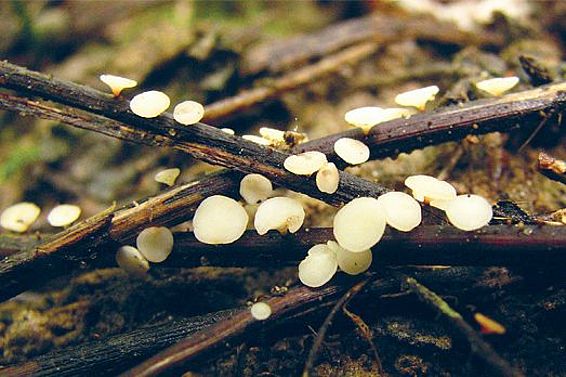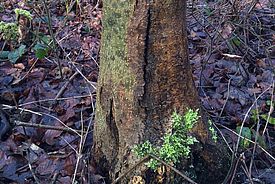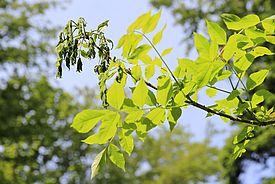24.11.2021 | Stephanie Kusma | News WSL
Ash dieback is now widespread throughout Switzerland and many other countries in Central Europe - and the emerald ash borer is moving closer. Nevertheless, there is hope for the ash tree. This was one conclusion of the conference "Future of the Ash Tree" at the Swiss Federal Institute for Forest, Snow and Landscape Research WSL.
After the storm Lothar a good twenty years ago, people worried about Switzerland becoming overgrown with ash: The common ash tree, at that time the second most common deciduous tree in Switzerland, grew on many of the windthrow areas. That’s history. "One is happy about every healthy ash tree," one participant summed up the tree’s current situation at the international conference "Future of the Ash Tree", where experts from science, the authorities and practice met last week at WSL to compare notes and swap ideas.
This is because the ash tree is suffering massively from the pathogenic fungus Hymenoscyphus fraxineus. This pest, the cause of ash dieback, was introduced from Asia and is widespread in Switzerland and large parts of Central Europe. Infected ash trees lose their leaves, their shoots die and crowns thin out. Some develop lesions in the lower part of the trunk, which provide an entry point for other harmful organisms.
Majority of ash trees infected
While older trees can resist the fungus for a long time, young ones often die within a few years. The majority of ash trees in Switzerland and in most parts of Europe are infected and show symptoms of the disease. Already by now only the third most common deciduous tree in Switzerland, ash trees are likely to decline even further in the future.
"But we see throughout Central Europe that a few percent of ash trees are tolerant to ash dieback," said Eckehard Brockerhoff of WSL, summarizing an important finding of the meeting. "It cannot be overemphasized how important it is that healthy-appearing trees aren’t felled," he said, underscoring a request that had been voiced several times.
Incentives to keep healthy ash trees
Leaving as many healthy ash trees in the forest as possible is important to preserve potentially fungus- and beetle-tolerant individuals. Such trees could ensure the continued existence of ash trees. They are also essential for resistance research and the breeding of tolerant trees. However, foresters say that there can be economic or safety reasons to cut these trees as well. Targeted incentives for preserving and promoting them could therefore help, was suggested at the meeting.
Programs to save ash trees are underway - not only in Switzerland but in many European countries. "This gives us hope that the ash tree will retain its regional adaptations," says Valentin Queloz, one of the organizers of the conference. One approach everyone is pursuing is resistance research. In Austria, for example, there is a program underway to have ash plantations with resistant trees for seed production, so-called seed orchards, in about 15 to 20 years.
Using viruses to combat fungi
There are other approaches, too: At WSL, for example, researchers are studying viruses that infect the pathogenic fungus. These viruses could potentially render the fungus less dangerous for ash trees and maybe one day serve as a biological weapon against ash dieback. Other researchers are looking for tree species that could, in a worst case scenario, replace ash trees - for the sake of biodiversity as well as the timber industry.
Even in regard to the emerald ash borer (Agrilus planipennis), an Asian pest beetle, there is hope. Its larvae feed mainly in the bark of ash trees. Like the introduced fungus, it does little harm to Asian ash trees. Others, it can kill. The beetle has already established itself in much of the U.S., as well as in western Russia and adjacent areas of Ukraine.
On the one hand, certain precautions are intended to prevent its introduction. On the other hand, new results from WSL researchers indicate that in some trees a so-called cross-resistance between ash dieback and emerald ash borer may exist: Ash trees that are tolerant to the former also seem to be able to keep the beetle in check better.
There is hope
Brockerhoff's conclusion: "There is hope for ash trees." Even if that hope seems more pronounced among researchers than with practitioners in the field, who are directly confronted with diseased and dying trees. But even there, some see the light in the darkness: The drop out of ash trees can e.g. promote natural thinning or other tree species.
Contact
Projects
Publications
Copyright
WSL and SLF provide the artwork for imaging of press articles relating to this media release for free. Transferring and saving the images in image databases and saving of images by third parties is not allowed.



